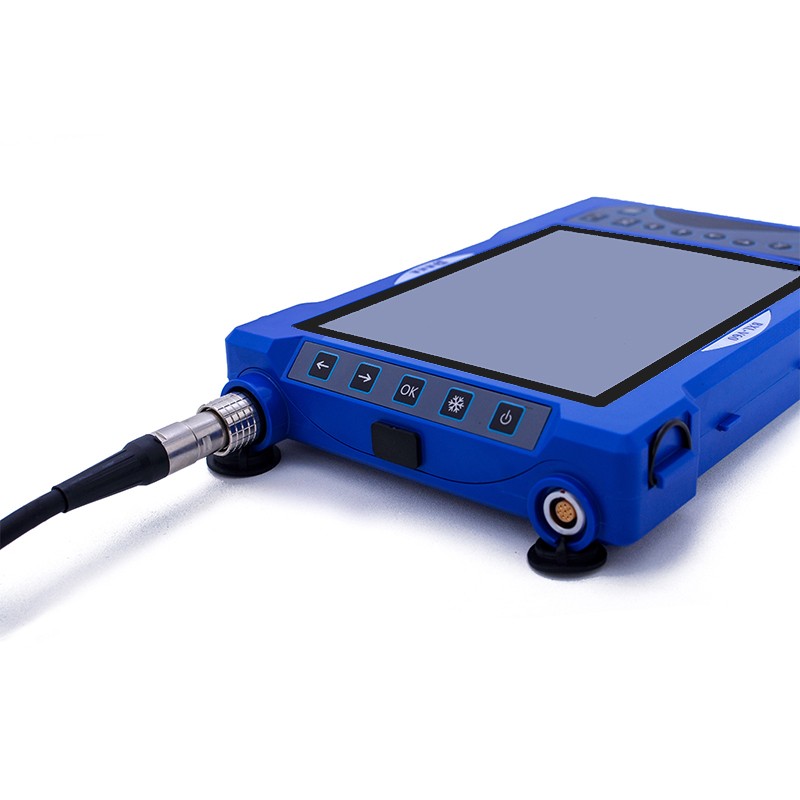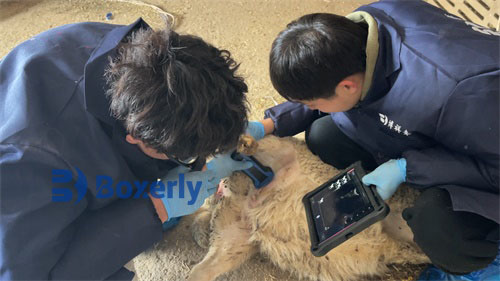Inverted fetus and twin dystocia are more common in obstetric diseases. If the direct examination or the use of cattle B-ultrasound to detect the anterior hip position, close to the pelvic entrance, it can be determined as dystocia. During the delivery process, if the two hind limbs of the fetus are exposed and the soles of the hooves are facing up, the surgeon can directly fix them and quickly pull the calf out. When the surgeon cannot see the two hind limbs and only touch the calf's tail, there are two quarantine methods to remove the calf under the monitoring of cattle B-ultrasound.

Veterinary B-ultrasound machine
There are many methods for handling. Method 1: The surgeon uses a thin rope to pass through the two hind legs and waist of the calf to pull out the fetus. Method 2: Push the calf into the abdominal cavity with force, take out the two hind legs, and pull out the fetus. However, method 1 can only be implemented when the pelvis is opened to a certain extent and the birth canal is large enough to accommodate the buttocks and two hind legs. Under the monitoring of cattle B-ultrasound, when correcting the calf to push deep into the uterus, the cow may be strongly strained. If there is no hope of adjusting the fetal position, the cow can be anesthetized. After anesthesia, the cow can allow the operator to adjust the fetal position at will. If there is no anesthetic and there is no hope of adjusting the fetal position, a steel hook as thick as a finger can be made and inserted directly from the calf's anus to hook the calf's ribs or pelvis. The calf can also be pulled out directly, but it must be used on the premise that the calf is dead. It can be treated after the cattle B-ultrasound examination.
The basis for predicting whether twin dystocia exists through prenatal examination with B-ultrasound of cattle is that multiple legs can be felt at the front edge of the pelvic cavity during direct examination. In this case, it should be considered that when the cow is giving birth, the operator must first distinguish the two front limbs or two hind limbs of a calf and then pull out the calf. If the limbs of one calf are confused with the limbs of another calf, the fetus cannot be pulled out.








